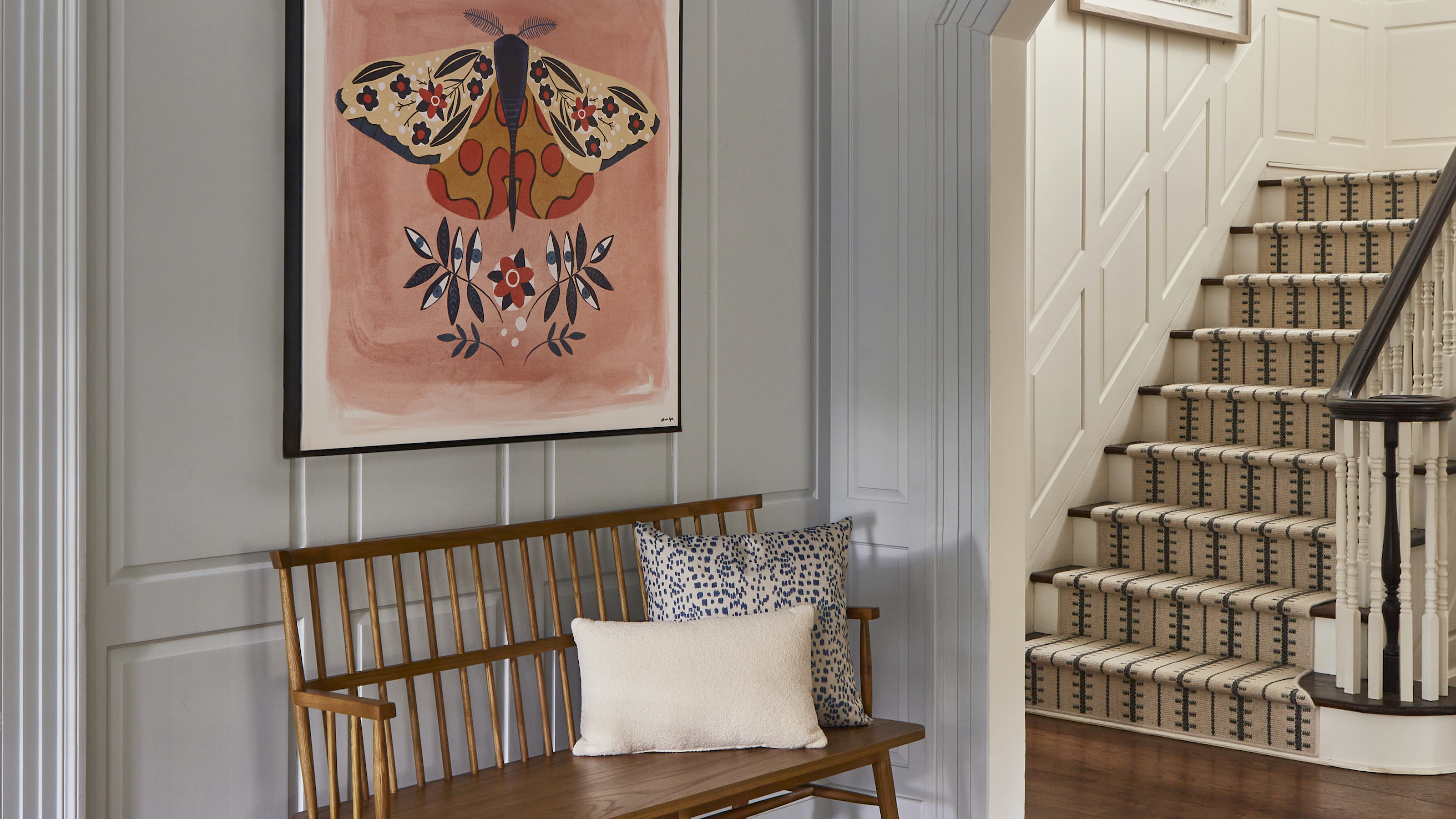
Stair runners are hot news and no longer only in period homes. In classical and contemporary hallways alike, pro designers are embracing their abundant benefits. We’re talking noise reduction, insulation, and added grip, as well as that all-important aesthetic appeal.
Of course, there’s nothing new about stair runners. In fact, they’ve been kicking around since the early 18th century, when wealthy households began using hand‑woven tapestries and Oriental rugs to protect their wood staircases and show off their status.
Stair runners fell out of fashion for a while, especially in contemporary homes, where the preference shifted towards minimal, bare wood or concrete treads for a cleaner, more architectural look.
But now stair runners are back, and rightly celebrated, as the perfect middle ground between bare, toe-freezing treads and the heavy look of fully carpeted stairs. More than that, they’re now recognised as a brilliant way to inject color, pattern and personality into a high-traffic zone that’s long deserved more than just transitional status.
So, if your hallway is crying out for a glow-up, a runner could be the design twist you didn’t know you needed. In this round-up of 10 brilliant stair runner ideas, we’ll spoil you with loads of great options to suit traditional or contemporary schemes and everything in between, helping you to pull your favorite staircase ideas together without missing a step.
1. Consider Custom Carpet

If you’ve ever scrolled endlessly looking for the perfect stair runner, you’ll know the struggle is real. That’s exactly what drove designer Katie Glaister, founder of K&H Design, to create a bespoke collection that’s bursting with color.
Tired of repeats and rigid patterns, Katie set out to design a 30-meter non-repeat runner that flows seamlessly across treads, landings, and turns, embracing the carpet trend for colorful designs. “We explored scale, color contrast, and pattern flow,” she recalls. Her efforts led to the launch of two collections, handwoven in India from 100% New Zealand lambswool, and available in 11 colorways, each with the potential to be cut to size for one-of-a-kind perfection.
“We love to use color, but that said, we like the palette to run through our projects,” says Katie. “By creating our own custom runners, we can pull the most loved colors from the project and harness them to create a centerpiece running up through the artery of the home.”
2. Pile on the Pattern

Loading on the pattern may sound chaotic, especially in a narrow, dimly lit entryway. Interior designer Laura Stephens proves wrong in this once-muted space, where a patterned stair runner now delivers serious punch.
“The brief for this hallway was to transform a previously bland and uninspiring entrance into a space that truly sets the tone for the colourful home beyond. At first, introducing a boldly patterned runner to a narrow hallway with original Victorian floor tiles felt like a risk,” she recalls.
In reality, the runner, by a Rum Fellow, enhances the detailing in the tiles and brings the whole space to life. “It draws the eye upward, too, highlighting the intricate iron latticework on the ceiling and creating a cohesive, layered visual experience from floor to ceiling,” explains Laura. Turns out, there’s no such thing as too much pattern, at least not if you know how to pull it all together.
3. Get Trim
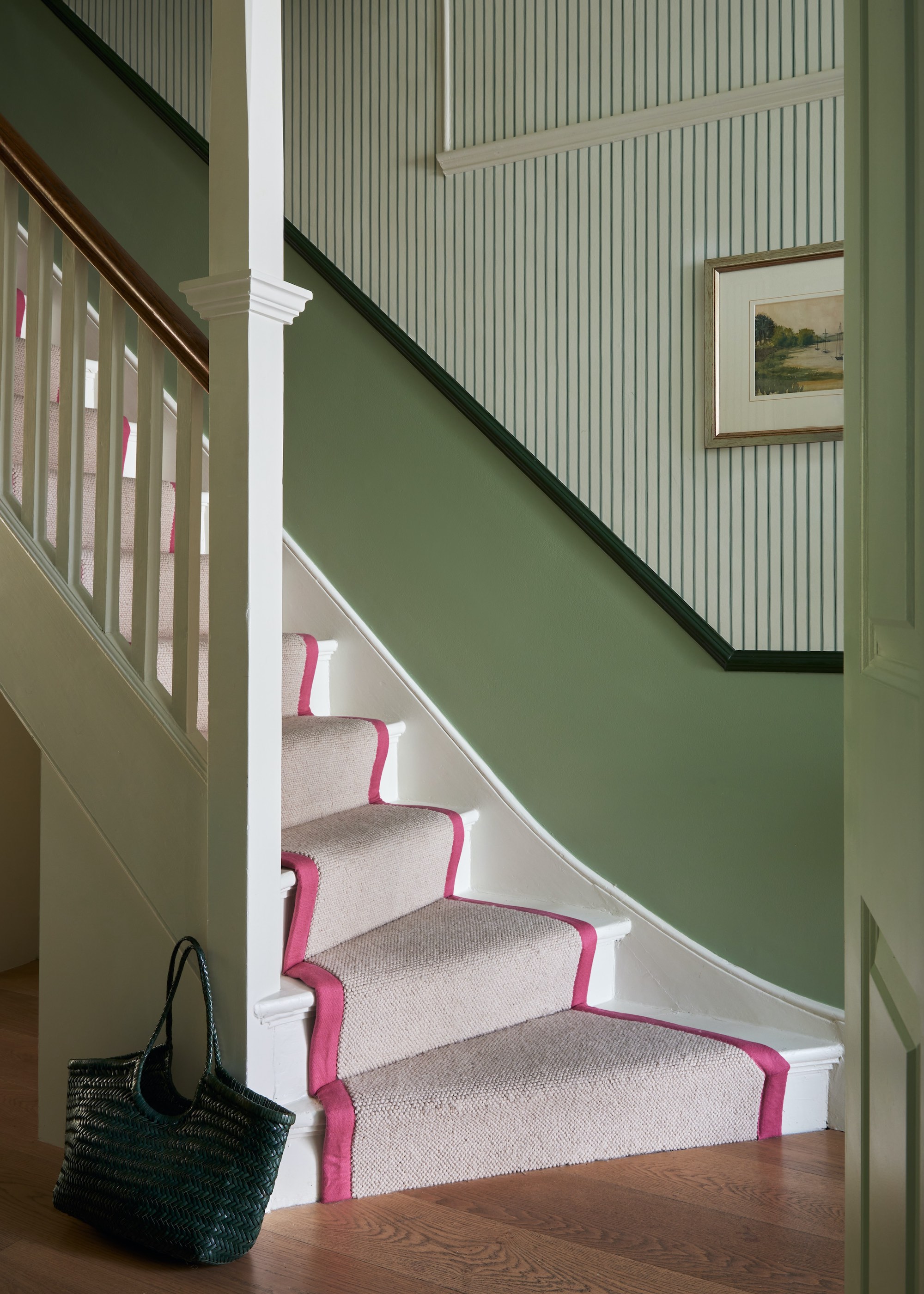
Sometimes, it’s the smaller details that bring the most joy. In this hallway by Laura Stephens, a bold pink trim on a neutral stair runner is the magic touch that makes everything pop, proving once and for all that pink is the perfect color that goes with green.
“For this project, the focus was on letting the striped wallpaper and beautiful green paintwork shine,” says Laura. “We chose a neutral runner to complement the scheme rather than compete with it but added a bold pink trim for a touch of contrast and playfulness. It’s a subtle detail that lifts the whole space without overpowering it.”
A border on stair runners is typically created by binding the edges with a contrasting wool or cotton tape. They’re widely available in stock color combinations and can often be customized in bespoke shades for a coordinated finish.
4. Bring the Holiday Home
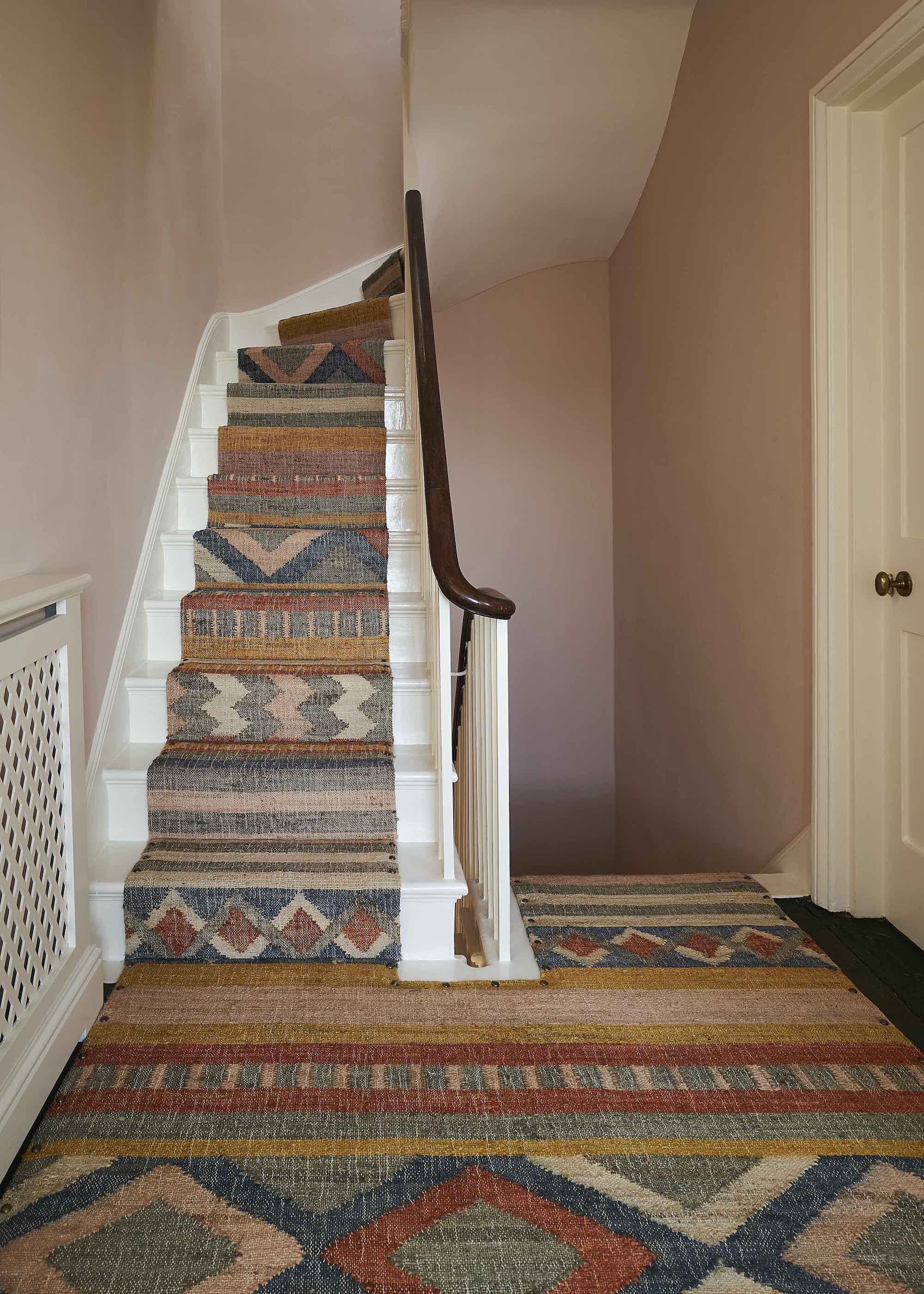
A sun-warmed palette, soft textures underfoot, and a hint of wanderlust — this hallway has all the feel-good energy of a far-flung escape. Interior designer Olivia Outred created this space for an artist and her family to provide a striking contrast to her light-filled, white-painted studio on the ground floor.
“We wanted the stairwell and entrance hall to be warm, soft, and welcoming as she steps out of her white-washed studio,” Olivia explains. “The walls are painted in Edward Bulmer’s Jonquil, which has a timeless quality, and helps the hallway feel like it has been like this for years, despite being freshly painted.”
But it’s the stair runner that really brings everything together. “The stair runner is a firm favorite and reminds me of Kilims that I have seen on my travels, which is exactly the look we wanted.” The runner, Arikara Multi by Tim Page, adds richness, soul, and all the holiday feels.
5. Make It Safe
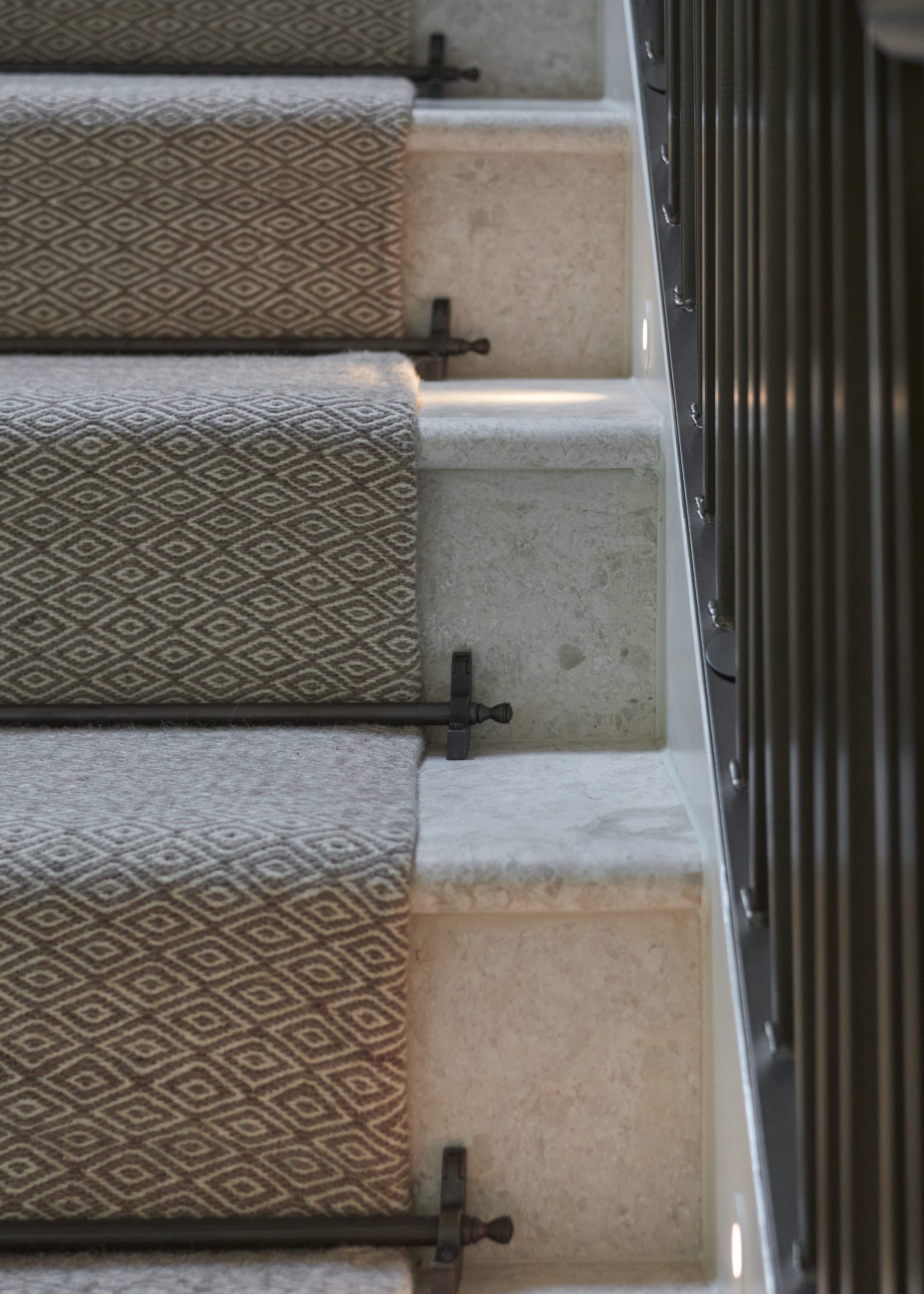
Stair rods aren’t just decorative, they’re an old but smart detail that adds elegance and extra safety to stair runners. Interior designer Sophie Paterson loves to use them to elevate a classy runner into something truly special.
“We chose this stair treatment to echo the sophisticated nature of the rest of this London property,” says Sophie. “The refined blend of natural stone on the stair alongside the soft brown-and-cream runner strikes a harmonious balance, visually engaging without overwhelming the space.”
The dark metal stair rods complete the look. “They add a further level of refinement and visual drama, matching the hue of the metal balusters, creating a visual rhythm up the stairs that makes the whole staircase feel tailored,” she explains.
While stair rods are an added investment, they offer lasting benefits. “Beyond their visual appeal, the rods serve a practical purpose in securing the runner and preventing any movement or bubbling over time,” explains Sophie.
6. Balance Your Borders
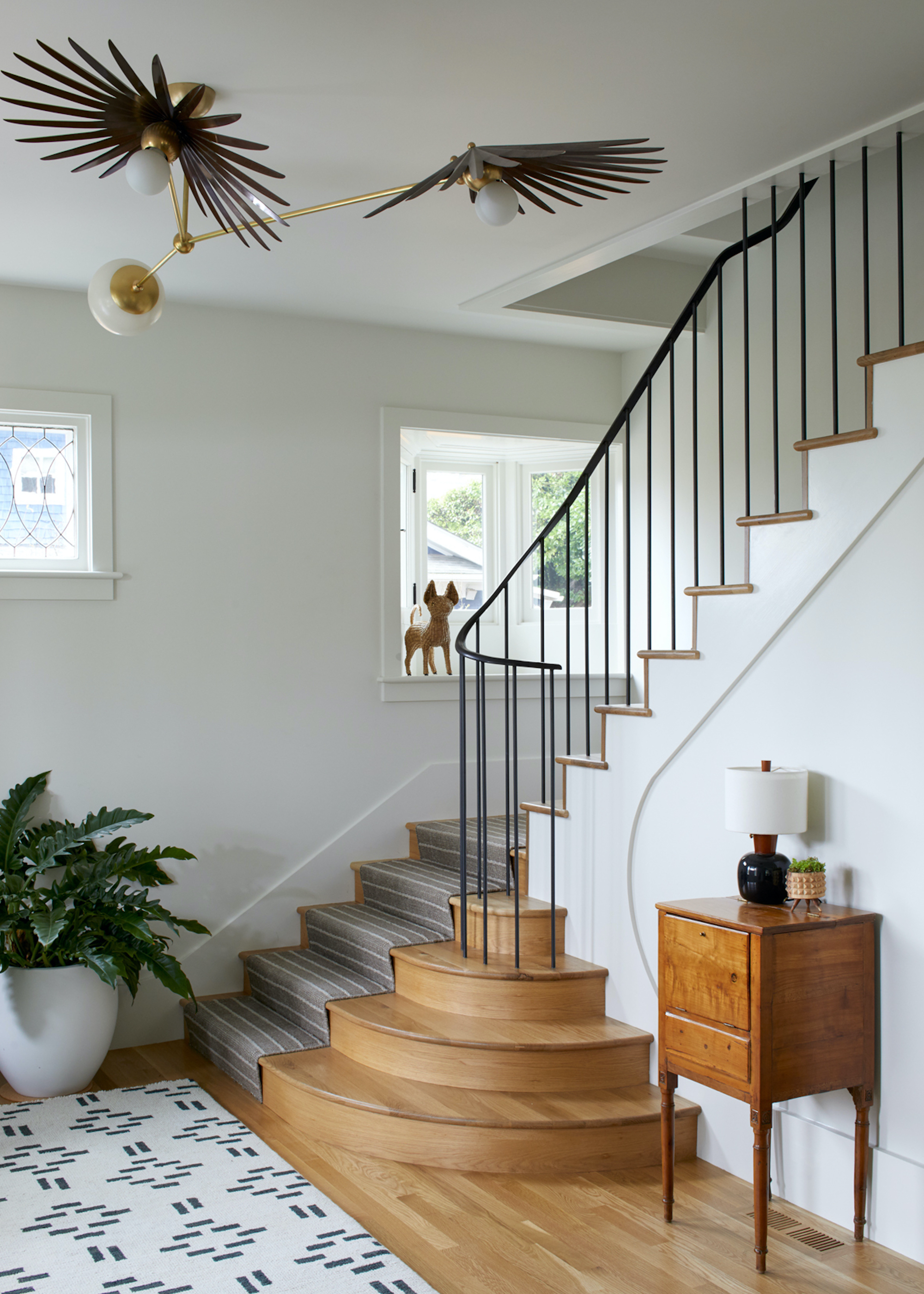
Leaving space around your stair runner isn’t a wasted opportunity; it’s a pro design move that highlights beautiful craftsmanship and adds a sense of balance. In this stylish home, interior designer Katie Dahl of Bright DesignLab opted to showcase the warm wood tones of the staircase by leaving a wide border of exposed tread and adding a generous return on the lower steps.
“For the runner, we wanted to introduce a tactile richness and a mix of textures that would complement the eclectic style of this property,” says Katie. “Exposing the wood grain on the stair treads was a deliberate design decision, breaking away from a more traditional approach to stair detailing.”
The combination of soft runner and solid timber creates a visual contrast in the interior design that feels fresh yet refined. For best results, leave around 3 to 4 inches (7.5–10cm) of wood visible on each side for a perfectly proportioned look. This ploy only works when the treads are worth admiring. If yours are tatty or bland, go for maximum runner cover up.
7. Be Adventurous With a Dynamic Pattern

A high-impact stair runner is one of the easiest ways to make a statement from the moment you open the front door, and this project by Kate Guinness shows just how effective it can be.
“The hallway itself is actually very typical of a London townhouse in terms of layout, but it does benefit from an unusual amount of natural light,” says Kate.
To enhance that light and keep things practical, Kate went for a distinctive runner by Sophie Cooney Runners. “We kept the space fresh and bright in terms of colours. For the stair runner, we went tonally a little darker as it’s a busy family household, so needed something practical as well as attractive,” she explains. It’s a confident choice that ties the home together, and one that guests won’t forget.
As the space was particularly narrow, Kate had a bespoke radiator cover made, with the baby blue colour picked up in the stair runner beyond. “It provides somewhere to put down keys, wallets, etc. when walking through the door,” adds Kate.
8. Have a block party!
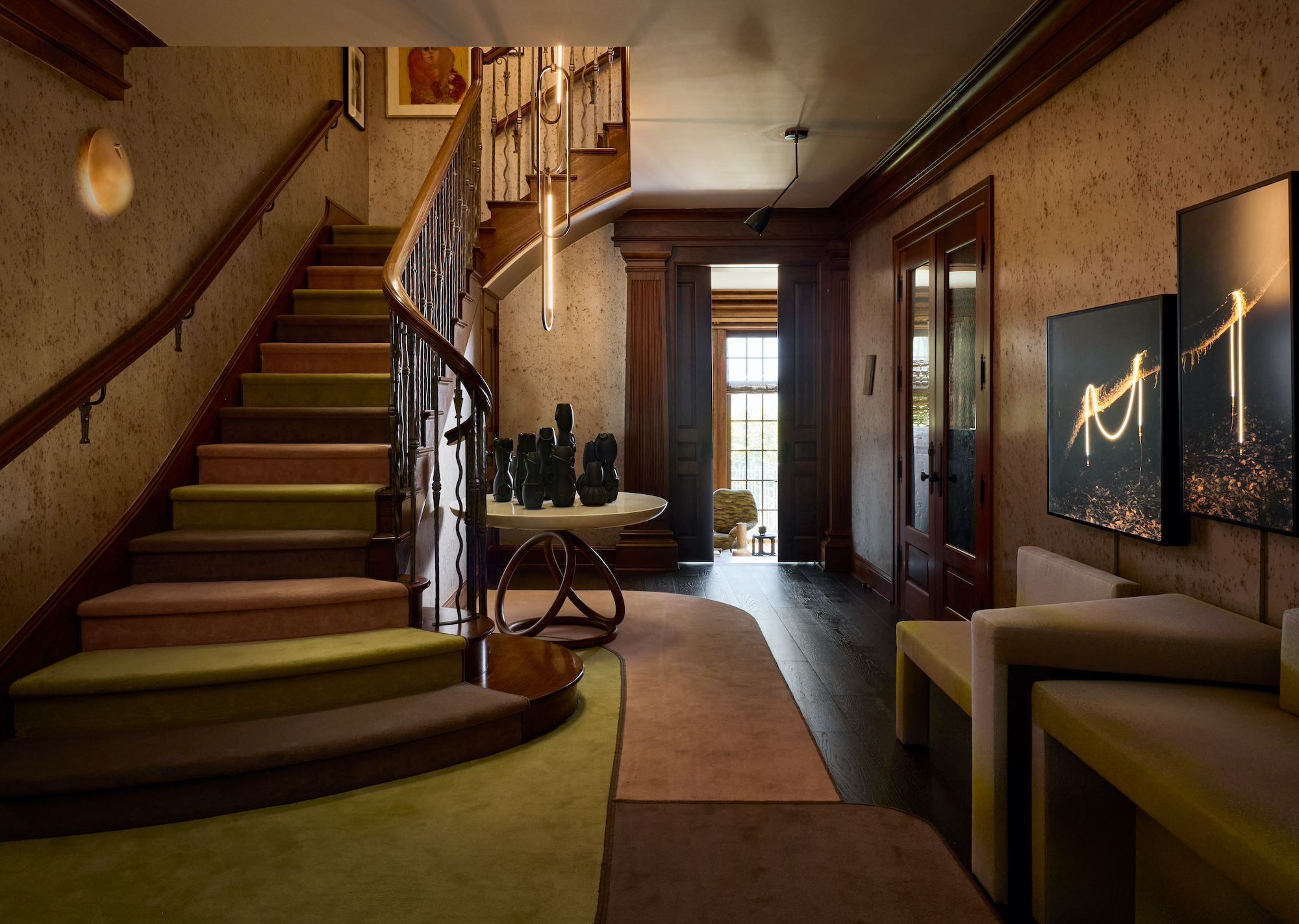
A staircase can be just as expressive as the rooms it connects, something designer Jon de la Cruz captures beautifully in this San Francisco home. By color-blocking each tread in a different shade to the next, he transformed a transitional space into a vibrant focal point.
“Stairways are no longer just passages — they’re moments of pause, connection, and even conversation,” says Jon. “I envisioned this one as an architectural appetizer, setting the tone for the rest of the home.”
The runner’s tone-on-tone palette adds energy and character while visually linking the colours used on the upper and lower floors. “The bold, colour-block stair runner creates a visual throughline, tying together the palette and personality of the rooms above and below,” he explains.
To nail the look, opt for related tones or a curated gradient. An ombre effect would also look cool. Here, we love how the runner’s colors spill onto the hallway floor in a dynamic, sculptural rug that extends the energy beyond the stairs.
9. Find your personality match
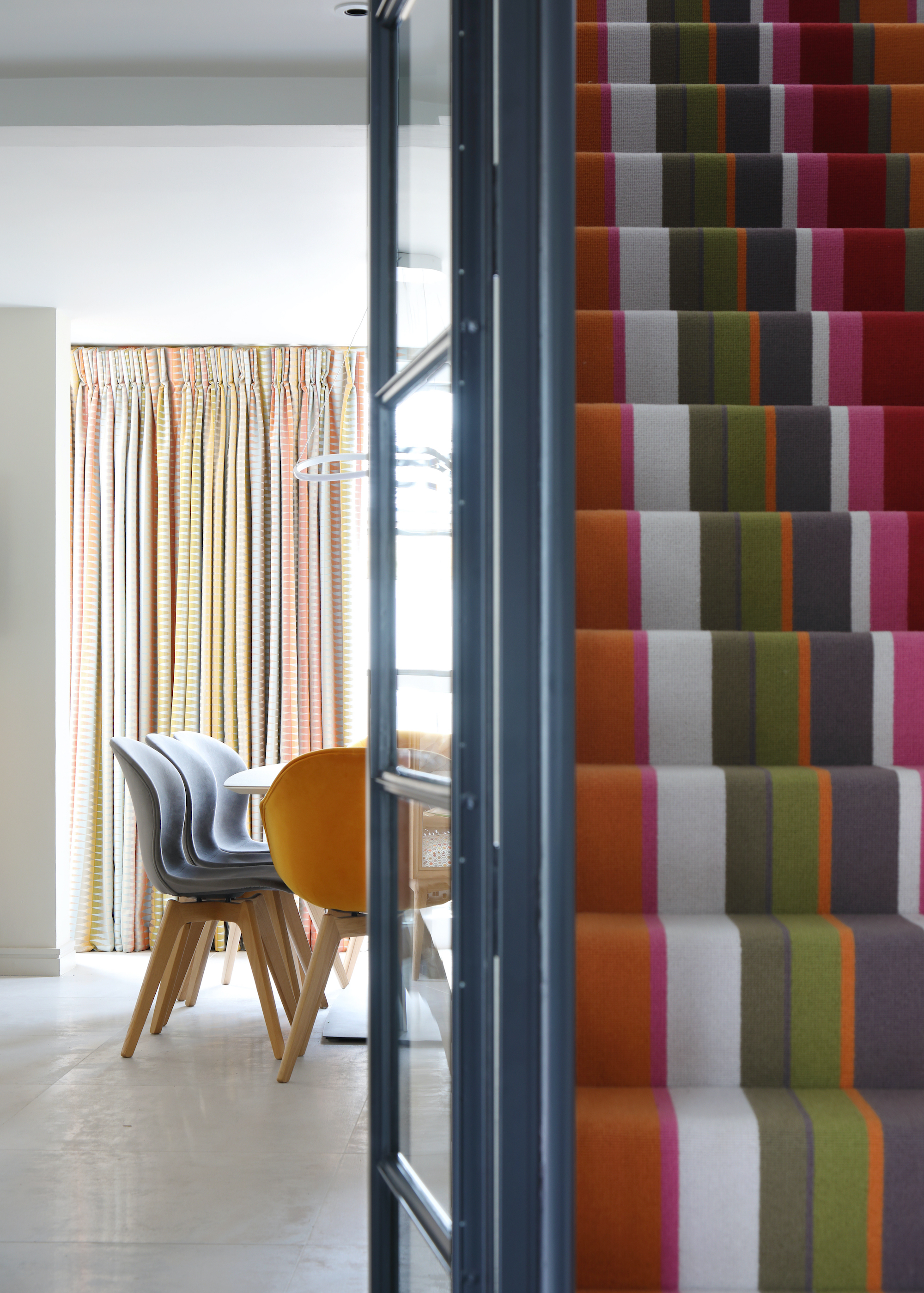
Selecting the perfect stair runner isn’t just a style decision, it can be a deeply personal one. Color psychology, and more specifically seasonal color personality, is a tool designers use to help create homes that don’t just look good but feel right. The theory divides people into Spring, Summer, Autumn or Winter types, each drawn to certain tones that naturally complement their energy, mood and personality.
“Stairs are a transitional space in the home, so you can afford to go bold on colour, and I work with my clients to draw out their colour personality,” says interior designer Nicola Holden, who works with Colour Psychology and the Aesthetics of Joy. “In this home, for example, the client has a Spring personality, so I recommended warm, yellow-based tones that reflect their light, uplifting energy. Coordinating the colour of the stair runner with the rest of the interior creates a sense of visual flow and emotional harmony.”
10. Mix classic and modern

The unexpected use of a modern runner design in a trad setting is a great way to shake things up, and this graphic staircase moment nails it. Interior designer Erin Coren, co-founder of Creative Nest, chose the Tuxedo runner from Stanton to breathe fresh energy into this historic home in Scarsdale, New York.
“We love this rug for its graphic nature and the way in which the ‘tuxedo’ stripes enhance and emphasize the stairs in the foyer, which was absolutely our goal. This staircase is beautiful, with original moldings from the 1700s and a carefully restored railing.”
Seen clearly from the foyer as you step into this home, the runner draws you into the space, offering a secondary visual focal point beyond the entry area. “Cream and black is a classic combo, very much appropriate for historic homes, especially when done in a soft palette like in this case, and we have used this runner in other similar homes as well, for its aesthetic appeal and durable wool construction that makes it perfect for high traffic areas.”
Are stair runners a good idea?
Yes, stair runners are an epic option for both practical and style reasons. They add a layer of safety by reducing the risk of slipping on bare wood or stone treads, especially in busy family homes. They are also kinder underfoot, reduce noise and improve insulation. On a design level, runners can completely transform a staircase, adding color and texture while creating visual cohesion between levels. Whether you opt for a smart stripe, a geometric pattern or a natural weave, a stair runner will glam-up one of the most well-travelled areas of your home.
What is the best type of runner for stairs?
The best type of runner for stairs is one that is durable, won’t show the dirt and isn’t a massive trip hazard. Wool is a hot choice thanks to its natural resilience, softness on toes, and natural sustainability, which makes it ideal for high-traffic staircases. For homes with pets or children, a wool-nylon blend can prove easier to clean, some can even be bleached. Flat-weave runners, like sisal or jute, are stylish and hardwearing, but can snag and some can be a little slippery. Patterned runners are always mood boosting and also practical, as they can help disguise dust and wear.
Before you commit to a stair runner, make sure you tick all the boxes. Choose a color palette that connects with adjoining spaces, and don’t forget the nerdy details. Durability, underlay, and proper fitting are just as important as looks.







